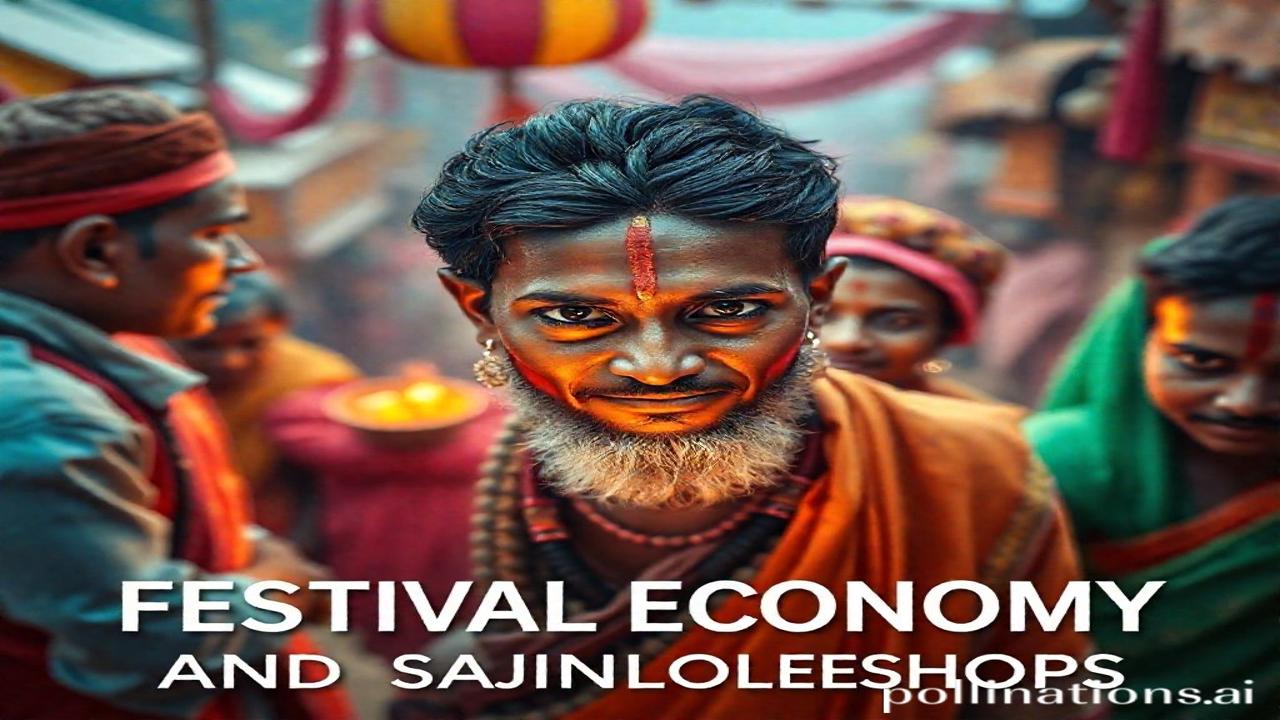Festival Economy and Traditional Livelihoods: Ek Khoi Hui Virasat Ki Khoj
“Aao chalein uss bazaar mein, jahan dhol ki goonj hawa mein ghuli hui thi. Jahaan rang birange kapde aur meethi mithai ki khushboo har dil ko choo jaati thi. Kya yaad hai woh mehfil jab Diwali ki roshni ne poore shahar ko jaga diya tha? Kya woh sirf roshni thi, ya usmein chhupi hui thi ek zinda kahani, ek arthavyavastha ki dastaan?”
Yeh blog article humein le jayega ek aisi yatra par, jahaan festivals sirf celebrations nahi hain, balki zinda dharohar hain, jinhone traditional livelihoods ko zinda rakha hai.
Festival Economy Kya Hai? Ek Jhalak
Festival economy simply refers to the economic activities and opportunities that arise around festivals and cultural celebrations. Think of it as a vibrant ecosystem where artisans, craftsmen, food vendors, performers, and many others thrive during specific festive periods. India mein, yeh concept centuries se chala aa raha hai.
Kab aur Kahan Shuru Hua? Well, tracing it to a specific date is tough, but consider this: har mandir, har mela, har shahar ka apna ek unique festival calendar hota tha. In calendars ke around, ek mini-economy khud ba khud ban jaati thi. Imagine the Mauryan Empire (322-185 BCE) with its grand festivals celebrating agriculture and military victories – yeh sab festival economy ka hissa tha!
Iski Ahmiyat Kya Hai? Festivals are not just about rituals and prayers. They are platforms for cultural exchange, skill sharing, and, most importantly, economic empowerment. People from different villages came together, bringing their unique crafts, goods, and stories. Yeh ek tarah se community bonding aur livelihood ka milan tha. Think of the Kumbh Mela, a massive gathering of faith, but also a huge economic engine.
Zameeni Sach: Log Aur Jeevan
Let’s dive into the lives touched by this vibrant system.
Artisans: Imagine a potter, Ramlal, in a small village near Jaipur. Diwali ke liye diye banane mein pura parivar laga hua hai. “Beti, zara mitti ko theek se san,” woh apni beti ko kehte hain. Unki kala, unki rozi-roti, sab Diwali se judi hui hai.
Dancers and Performers: Natya shastron mein likhi hui kathak ki mudraon ko jeevit karne wali Sundari Bai, jo Durga Puja ke pandal mein nach rahi hain. Unki kala, sadiyon ki parampara, aaj bhi unke parivar ko pal rahi hai.
Farmers: Holi ke rangon mein range hue kisaan, apne gehu ki fasal ke sath khush hain. Unke liye, Holi ek celebration hai, ek shukrana hai unke mehnat ka.
Dialogue-style narrative:
” अरे, लाला जी, ये दीये कितने के हैं?” A customer asks.
“बस दस रुपये,” Ramlal replies, his hands covered in clay. “मगर ये मिट्टी के दीये, बस दीये नहीं हैं, ये हमारी संस्कृति की रोशनी हैं.”
Dharohar Aur Pehchan: Aaj Bhi Zinda
Today, even with the rise of global markets and digital economies, the festival economy continues to play a vital role in India.
Rituals: Navratri ke nau din, Durga Puja ke pandals, Diwali ki safai – yeh sab rituals toh hain, but they also drive consumption of specific goods and services.
Art: Madhubani paintings, terracotta idols, zardozi embroidery – these are not just art forms, they are economic drivers.
Festivals: Think of Pushkar Camel Fair in Rajasthan. It is a cattle fair, yes, but it’s also a huge tourism and cultural event that injects millions of rupees into the local economy.
Bharatiyata (Indianness): Festival economy is intertwined with our identity as Indians. It is a reflection of our diverse culture, our artistic heritage, and our entrepreneurial spirit. It showcases our ability to celebrate and thrive simultaneously.
Majedar Tathya Ya Bhram-Bhanjak
Myth: Festivals are just about religious fervor.
Truth: While spirituality is a core component, festivals are powerful platforms for economic activity and social interaction. They are complex socio-economic systems that have evolved over centuries.
Fun Fact: The tradition of exchanging gifts during Diwali has roots in ancient barter systems. People used to exchange goods and services as a way to strengthen social bonds and ensure economic cooperation.
Drishya Aur Bhavnayein
Imagine the air filled with the aroma of sandalwood incense during a Ganesh Chaturthi procession. You can feel the heat from the clay ovens where diyas are being baked. The sounds of temple bells and chanting of mantras echo through the narrow lanes of Varanasi during Dev Deepawali. These sensory experiences are integral to the festival economy, creating a vibrant atmosphere that attracts participants and fuels economic activity.
Antim Vichar Ya Uddharan
“हर त्यौहार एक दरवाजा है, जो हमें अपनी जड़ों की ओर ले जाता है। यह सिर्फ जश्न नहीं है, यह हमारी पहचान है, हमारी अर्थव्यवस्था है, हमारी विरासत है।”
A final Sanskrit shloka to ponder:
“उद्यमेन हि सिध्यन्ति कार्याणि न मनोरथैः। न हि सुप्तस्य सिंहस्य प्रविशन्ति मुखे मृगाः।।”
(Udyamena hi sidhyanti karyani na manorathaih, Na hi suptasya sinhasya pravishanti mukhe mrigah)
Translation: Success is achieved through hard work and effort, not mere wishes. Deer do not enter the mouth of a sleeping lion. This applies perfectly to the festival economy: it requires effort, creativity, and community participation to thrive.
